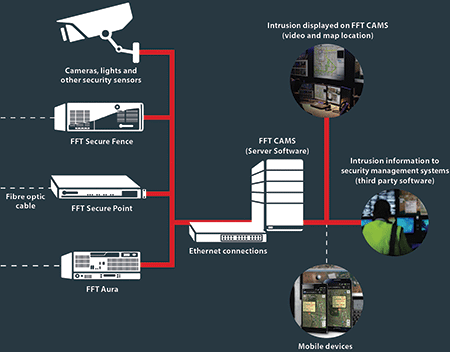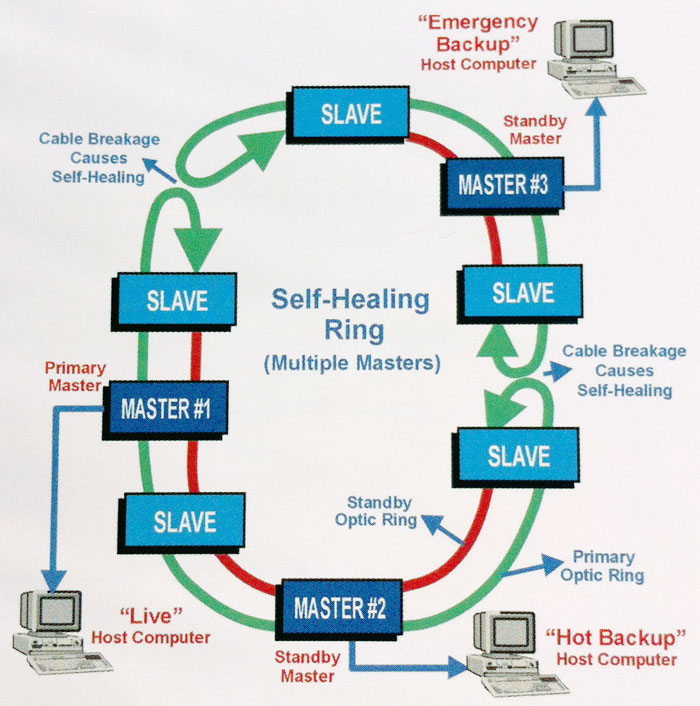Why a Fiber Optic Security System Is Crucial for High-Security Facilities and Environments
Why a Fiber Optic Security System Is Crucial for High-Security Facilities and Environments
Blog Article
Why Fiber Optic Protection Systems Are the Future of Protection
The change to fiber optic security systems notes a substantial innovation in the world of security, driven by their phenomenal information transmission capabilities and strength to exterior interferences. These systems not just promote faster and much more reputable communication yet likewise offer a cost-efficient service with lowered upkeep needs. As the landscape of safety and security advances alongside emerging innovations such as AI and IoT, the capacity for optical fiber to enhance and redefine safety and security infrastructures ends up being significantly noticeable. However, the ramifications of these improvements increase essential questions about the future of safety actions and their effectiveness in an ever-changing environment.
Advantages of Fiber Optic Systems
Among the main benefits of fiber optic systems is their premium data transfer capacity, which facilitates the transmission of large quantities of information over fars away without substantial loss. This characteristic is specifically helpful for safety and security applications that require the continuous monitoring and transfer of high-definition video feeds, sensing unit information, and various other critical info. Fiber optics can accommodate the expanding demands of modern protection systems, making sure that information remains undamaged and trusted.
Furthermore, fiber optic wires are much less vulnerable to electro-magnetic interference, which can be a considerable issue in atmospheres with various digital tools. This resistance improves the honesty of the data being sent, thus decreasing the danger of data breaches or system failings. Additionally, fiber optic systems are inherently a lot more secure than standard copper wires, as tapping right into a fiber optic line without detection is exceptionally challenging.
The durability of fiber optic wires additionally adds to their charm. They are resistant to ecological factors such as moisture and temperature level changes, decreasing maintenance expenses and increasing system longevity. Generally, these benefits setting fiber optic systems as a robust and effective option for modern protection infrastructures, guaranteeing reputable and safe and secure information transmission.
Boosted Information Transmission Speed

The ability to transfer huge amounts of information quickly helps with the seamless integration of high-definition video feeds and advanced analytics. Safety and security systems can now process and examine info in real-time, boosting response times and situational recognition. In addition, fiber optic links sustain longer transmission ranges without deterioration of signal high quality, making them suitable for large protection networks.
The enhanced rate of fiber optic systems not just improves the efficiency of security operations but also reduces latency. This is especially vital in crucial situations where prompt decision-making can stop security violations or alleviate prospective dangers. As organizations continue to focus on safety and security and effectiveness, the demand for rapid and trustworthy helpful site data transmission will definitely strengthen fiber optic systems as a keystone of contemporary safety infrastructure.
Resistance to Disturbance
Fiber optic safety systems consistently demonstrate remarkable resistance to electromagnetic interference, a vital advantage in atmospheres vulnerable to electronic noise. Unlike traditional copper cables, which can be negatively affected by electromagnetic fields, radio regularity disturbance, and various other forms of electric disturbance, fiber optic wires make use of light to transfer data. This fundamental home ensures that the signals continue to be clear and unaltered, no matter bordering electronic task.
Using glass or plastic fibers in fiber optic innovation develops an obstacle against disturbance, allowing for reputable information transmission even in challenging scenarios such as commercial centers, city locations with high electronic website traffic, or areas near radio towers. This particular considerably minimizes the chance of signal destruction or loss, making fiber optic systems particularly suitable for safety applications where honesty and accuracy of data are paramount.
Additionally, this resistance to disturbance boosts the total efficiency and reliability of safety and security systems, making sure that surveillance and sharp systems work flawlessly. In a globe where safety and security is increasingly endangered by advanced innovations, the resilience navigate to these guys of fiber optic systems sticks out as a crucial feature, reinforcing their condition as a necessary part of modern safety infrastructure.
Cost-Effectiveness In Time
Considerable price savings can be achieved in time with the execution of fiber optic security systems. While the initial financial investment may seem higher compared to standard copper-based systems, the lasting financial benefits emerge via decreased operational and maintenance prices (fiber security). Fiber optic cable televisions are inherently much more long lasting and less at risk to ecological factors, which equates to reduce replacement and repair costs over their life expectancy
In addition, fiber optic systems need much less power to operate, which even more lowers energy costs. Enhanced data transmission capacities permit fewer repeaters and amplifiers, minimizing devices financial investment and improving installment processes. The scalability of these systems likewise adds to cost-effectiveness, as organizations can broaden their safety and security framework without incurring significant additional costs.
An additional aspect to take into consideration is the increased effectiveness in monitoring and response abilities that optical fiber supply. Improved real-time information transmission can lead to quicker case action times, possibly mitigating losses and liabilities associated with protection breaches. Altogether, the lasting advantages of fiber optic safety and security systems not just validate the first expense yet likewise place them as a monetarily sensible option for companies looking for robust security options.

Future Advancements in Protection
Progressing technologies are established to change protection systems, integrating expert system (AI) and maker knowing to improve hazard detection and response capabilities. These advancements will certainly enable protection systems to analyze vast quantities of information in real-time, identifying patterns and anomalies that suggest potential dangers. This aggressive technique will enable quicker decision-making and a lot more effective event actions.
Additionally, the incorporation of the Internet of Things (IoT) is leading the way for interconnected safety and security gadgets, offering comprehensive monitoring and surveillance. Smart sensing units can pass on info regarding ecological modifications, while automated notifies can inform security personnel right away of questionable tasks.
Moreover, the advancement of biometric innovations will certainly better strengthen safety and security devices. Face recognition, fingerprint scanning, and retina recognition are coming to be a lot more innovative, providing layers of verification that are hard to bypass.
Verdict
In conclusion, fiber optic security systems stand for a considerable development in security innovation, supplying exceptional data transmission rate, resistance to electro-magnetic disturbance, and long-lasting cost-effectiveness. As the demand for advanced safety and security remedies remains to expand, the combination of fiber optics with arising modern technologies such as AI, IoT, and biometrics will better you can check here improve protection infrastructures (fiber security). The mix of these developments will make sure a more safe and secure and receptive setting, solidifying optical fiber as a foundation of future protection systems
Report this page